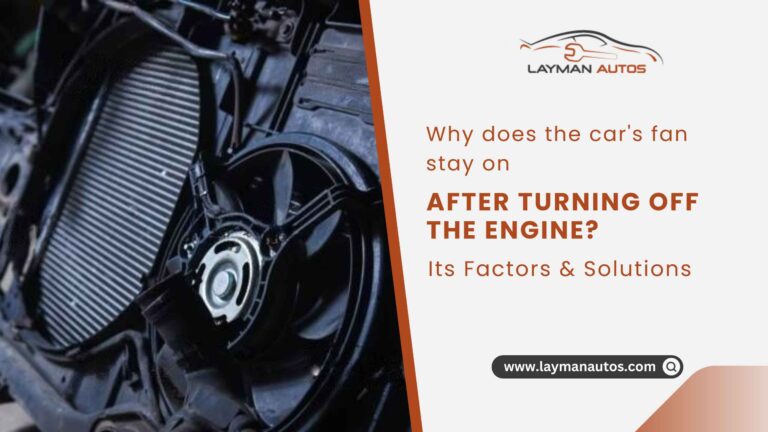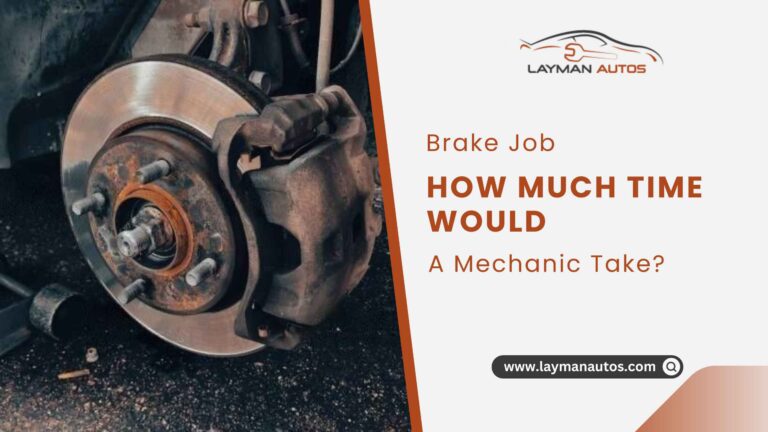Left Turn Woes: Diagnosing and Fixing the Noisy Turn in Your Car
What would be your reaction when you hear a car’s unsettling noises with every turn you take? Leaving the car unattended before going on trips may cost you to encounter several problems like bad alignment and impaired suspension parts. So, let not the moment come when your car creaks, and read my expert guide on why a car makes noise when turn left only.
The car’s unpleasant noises result from the different speeds or worn-out components. However, you need to take it seriously, help yourself lubricate its parts as a temporary solution, and schedule maintenance professionally.
This article is about a quick insight into why your steering wheel makes noise when turning left only, along with the troubleshooting. In addition, you will be guided on how long you can maintain your car in good condition.
Car Makes Noise When Turn Left Only – Reasons to Evaluate
When you hear clunking, squealing, groaning, or whining noises from the car, do not take it for granted and solve the problem as early as possible. The noises may be the early sign of an imminent problem. Let’s, get insight into the common reasons to find immediate solutions.
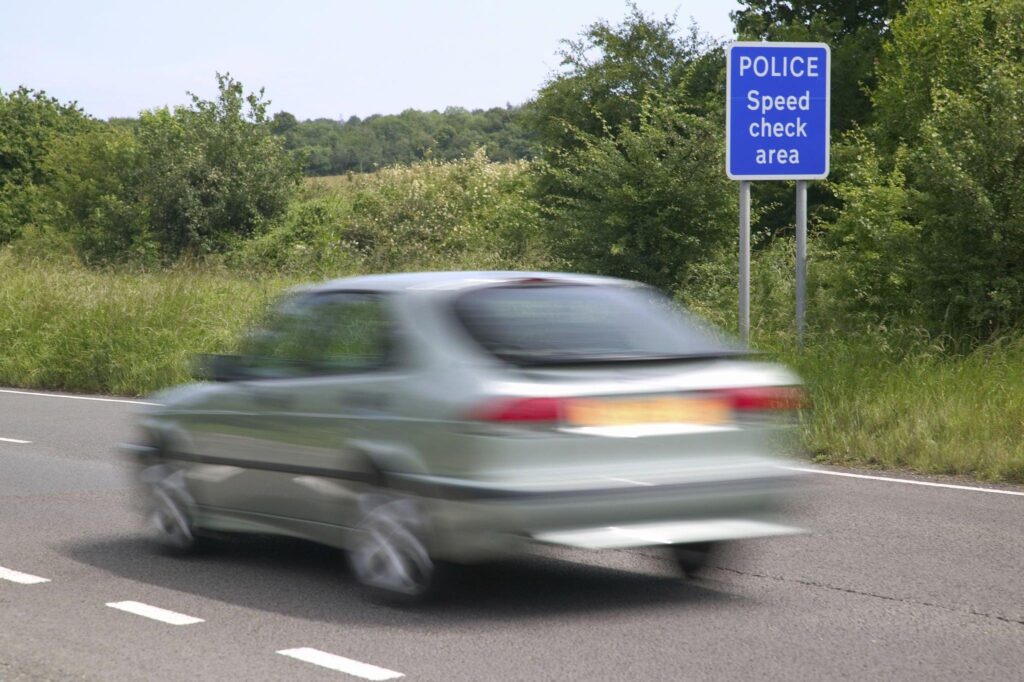
Speed-Dependent Sounds
Different components are involved in accelerating cars. You cannot leave the one broken to get its benefit from the other. Similarly, you should know what parts make noise when turning at low or high speed. The need to differentiate various car components will make it easier to hunt the solution to the problem and ensure their proper functioning.
1. Low-Speed Noises
Do you even think your car makes a whining sound, even at low speed? If not, make a mental note and fix the problems early. At low speeds, a suspension and power steering system works to make a less laborious turn.
However, a creaking sound is mandatory if the suspension parts, such as shocks and struts, are aged. The same goes for the unattended power steering wheel and bad belt; the front of the car engine will make you hear popping sounds.
2. Normal-Speed Noises
Normal speed noises are the result of the improper functioning of the parts of the car. Several unpleasant noises are the first sign that a car has run out of lubricants. As a result, friction production weakens joints and demands trained hands.
- Low-level power steering fluid
- Loose belts create some problems.
- The tie rod (which joins the steering gear and knuckles) requires replacement.
- The cracked hose that provides a connection between the gear and the pump
3. High-Speed Noises
Generally, high-speed turns are nothing but a dangerous situation, and noises prove to be the cherry on top. Nonetheless, checking the following parts is essential if you hear groaning noises.
- Condition of CV joints
- Destructive coupling at high speeds
- The humming sound of wheel bearings
Wheel bearings assigned the responsibility of carrying the load during the high-speed turn. So, car-generating screeching noise is a sign or indication that should not be taken for granted.
Worn-out CV Joints

The constant velocity joint (CV joint) helps turn the wheels by causing the driveshaft to deliver the power at an angle. Hence, linking the vehicle’s transmission to the wheels. These joints help maintain the constant speed by maintaining the up-and-down movement of the suspension.
The prominent signs of damaged CV joints are
- Protective Boot cracks
- Grease leaking
- Entry of debris and moisture
Although the CV joint lasts for a long time, it is only prone to damage due to lubrication loss, excess contamination, and exposure to corrosion.
Worn Suspension Parts
Struts comprise the car’s suspension system while encouraging brake application and acceleration on bumpy roads. They absorb the excess bounce and promote stable locomotion.
Damaged shocks and struts misbehave in the car’s controlling system. If the car makes a noise turning left, the entire weight is shifted to the right side.
Ball Joints
The ball joint is like the pivot joint and connects the wheel to the front suspension. You can find their location close to the tie rod ends and control arms. The consequence of the damaged ball joint is a clunking sound, a shaky steering wheel, and unresponsive steering.
Also, the bumpy roads do their part in accelerating the severe wear of the ball joints and preventing the swiveling movement of the steering and suspension systems. Either the ball joints constantly move or seize in a single position. Hence, Both conditions need a professional to treat them.
Leaking of Power Steering Fluid
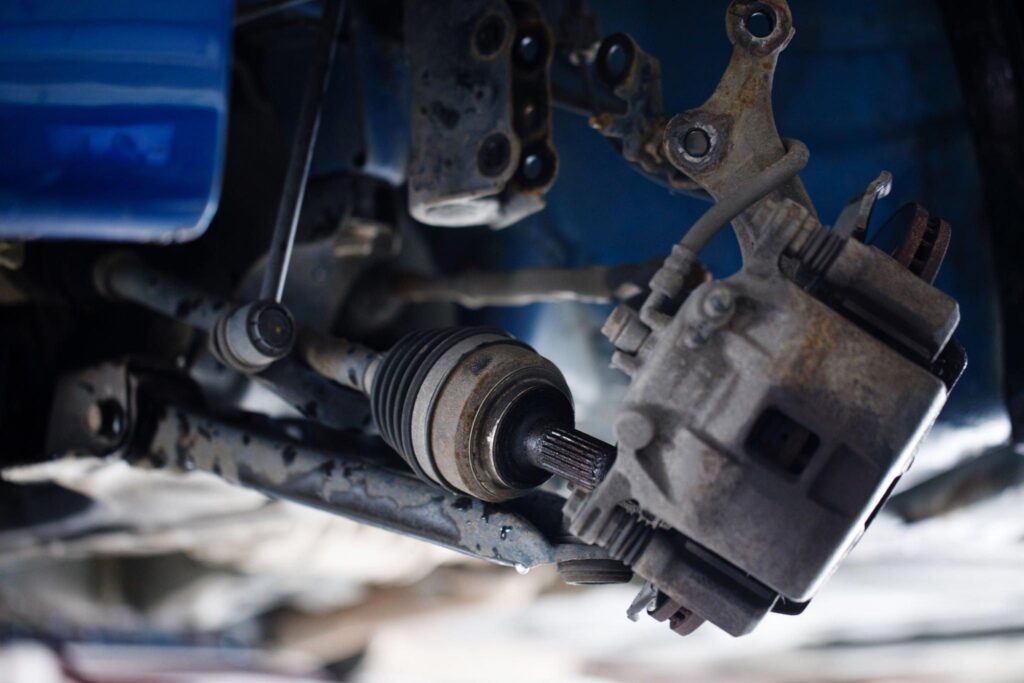
Isn’t sitting in a seat and managing all the controls exciting? The steering wheel is a device by which you can drive the car only if its parts are adequately lubricated. The hydraulic system makes out work from the pulley and ensures all the functions fall into their place.
By any chance, the steering fluid leaks from the reservoir tank, making the steering heavier and generating noises. So, car steering noise when turning left only is the outcome of the low steering fluid level.
Clogged Steering Reservoir Tank
The steering wheel requires a particular fluid to flow from the reservoir to the steering rack, steering box, and pinion. The fluid is responsible for maintaining proper functioning while turning or accelerating. When you notice the strange sounds, the fluid’s reservoir is likely contaminated with impurities.
Bad Tie Rod Edgings
Tie rods make up the car’s steering system and connect the steering gear to the knuckles. These rods are the central point where the front wheels are attached. Overall, it ensures the front wheels’ alignment and helps them move while turning at low speed.
If worn out, it creates premature tire wear and control problems. Moreover, you can uplift the car and check the conditions of the tie rods. The apparent symptom is the dead space when turning the steering wheel.
Bad Wheel Bearings/ Wheel Alignment
Wheel bearings are a set of steel balls and tapers connected by a metal ring. On the center of the wheels are the hollow metal spaces called hubs that ensure the tight attachment of the wheel bearings so that they do not catch dirt and contaminants. The primary function of wheels and axles is to help a smooth wheel rotation while reducing maximum friction.
Wheel bearings are responsible for carrying the vehicle’s load during braking and accelerating and are exposed to extreme wear and tear. The exclusive howling sound is the characteristic of the wheel bearing and an indication of a severe issue.
How to Fix Car Noise When Turning Left?
Fixing a car making noise is not a DIY project; it requires professional advice. However, you can help yourself by adding fluids to the components that make noise at a lower speed. You can inspect the fluid health on your own if you notice a dark brown or black colored fluid; it’s time to change it with a clean red one.
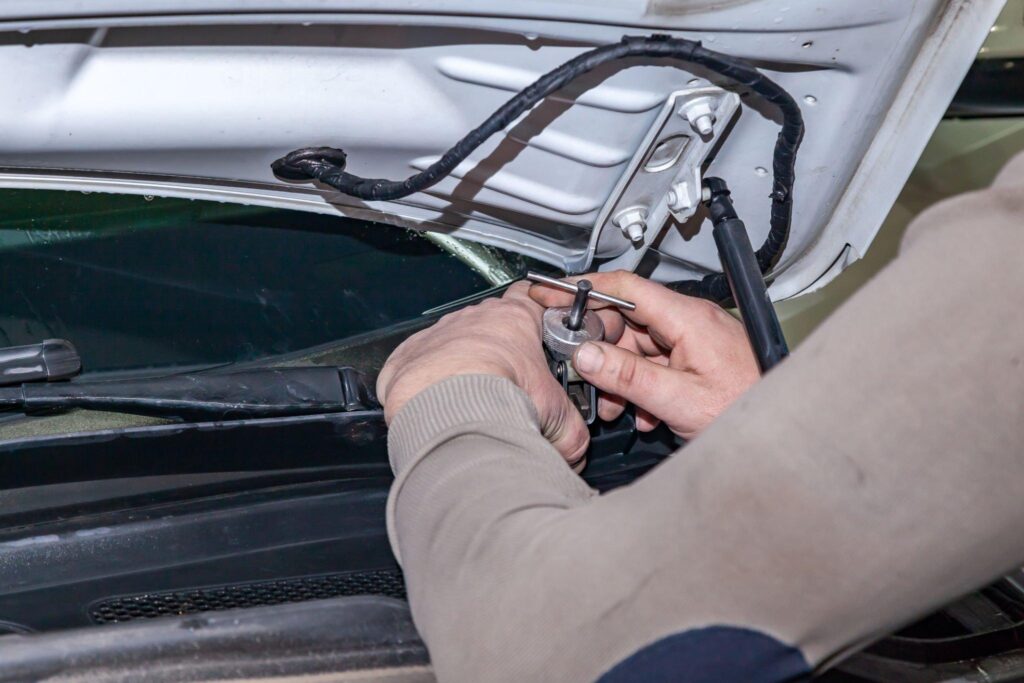
If you believe in self-inspection before riding to the mechanic, there are several ways to know the health of the ball joints, replacement of the suspensions, or many other components. You can do the replacement.
- Lift the vehicle by positioning the jack stand
- Remove the wheel (in case of CV joint, struts, wheel bearing, and brake replacement)
- Remove the nut with the affected problem using a wrench.
- Replace with the newer parts and tighten the nut again.
- Reassemble the wheel
In the worst situations, replacement of the aged parts is recommended in the car turning. So, remain in contact with a trustworthy repairer and change the parts before the situation goes beyond repair. Remember to align the car after making all necessary changes.
Frequently Asked Questions
Is It Safe to Drive With a Wheel Bearing Noise?
Driving with a wheel bearing noise is not safe at any cost. It may become the culprit of suspension damage and cause the tire to fall apart. Moreover, you will notice that the car will lose control.
How Does the Steering Wheel Turn the Tires?
Understanding how the steering mechanism works are vital to reaching the root causes of car noises. The process starts with working the steering wheel and the other components that make the tires turn. The steering wheel is joined to the steering column, which attaches to the rack and pinion.
When you turn the wheel, the steering column comes into action and spins, pushing the rack and pinion. Tie rods that ensure the connection of the pinion and rack with the wheels help control alignment. If any of these suffer damage, the outcome will be rattling noises.
How Do I Know If My Car Needs New Brakes?
Aged brakes give up with the indication of the squealing noise. When you drive with bad breaks, the car eventually pulls to one side and feels soft or spongy.
What is the Average Lifespan of a CV joint?
Generally, the need for the replacement of a CV joint is done after 70,000 to 130,000 miles. Nonetheless, if the protective boot is cracked or dry, you must consult the expert and change the joint.
Summing Up
For every turn you take, there is a strange noise from either part. What do you do? This article guides how to make a car’s condition fit and travel appropriate. In addition, you must diagnose the solutions of the significant reasons to ease taking care of the components used in turning wheels.

